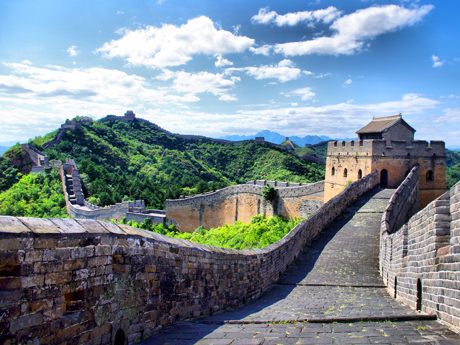Introduction
The Great Wall of China is one of the world’s greatest and most famous landmarks. With a history dating back to more than 2,000 years, some of the Great Wall lies in ruins but remains one of the world’s most appealing attractions due to its architectural grandeur and historical significance.
Therefore, it should be included on anyone’s travel bucket list. With our Quick Guide, explore the best parts of the wall to visit!
Background
The Great Wall was constructed as a means of protecting the area’s rich agricultural lands and to protect the area from aggressive warrior tribes – including the Huns. Originally built of stone, wood, grass and earth, and subsequently bricks, the wall was built over a period of 2,000 years. With the advancement of military technology, including gunpowder and other weaponry, the wall’s purpose as a defense mechanism soon grew obsolete, but it remains a stunning example of historical architecture.
Five Facts about the Wall
The wall’s construction dates back to more than 2,000 years, with the first section beginning between the 7th and 6th centuries BC and the second stage during the Ming Dynasty between the 14th and 17th centuries AD.
Contrary to popular belief, the wall cannot be seen from the moon. This old myth was first popularized in a letter in 1754, and was reinforced by Ripley’s “Believe It or Not” in 1932.
The Chinese invented the wheelbarrow. It was used extensively during the wall’s construction.
Although a formidable structure, the wall did not always successfully serve its purpose. Mongol invaders led by Genghis Khan easily conquered northern China during 1211-1223 AD, and ruled China until 1368 AD.
This is not a singular wall stretching across China. Rather, it is a network of wall segments built during different dynasties to protect China’s northern border, totaling 13,171 miles (21,196 kilometers). To put this in perspective, the earth’s circumference is 24,854 miles (40,000 kilometers).
Survival Tips
Due to its complex and diverse terrain, the Great Wall of China comes with several challenges…
To ensure an enjoyable visit, bring comfortable shoes, clothing & raincoat and be sure to have enough water and some snacks with you.
There are zip lines and cable cars that will take you to and from the more popular sections.
Most important, bring a camera and an open mind – this is truly one of the most breathtaking man-made structures on the planet.
Popular Hike Options
Badaling
Averaging nearly 26 feet (8 meters) in height, this is one of the most picturesque and famous sections of the wall. Built in 1504 and now surrounded by significant development including a cable car, you can see plenty in a matter of hours.
Juyongguan
Easily accessible from Beijing, this was a strategic military garrison in ancient China. Its pass, encircled by the wall, was a renowned stronghold with military installations, watch towers, residences and temples. Like Badaling, it is a moderately easy climb to the top.
Jinshanling-Simatai
This is a slightly more difficult hike than the part-day excursions, but well worth the visit. Considered by many to be the single best way to see the wall, it is clear of pollution and in some stretches, clear of tourists. This section is six miles long, passing through 67 towers with spectacular views of the landscape.
Jiankou
A photographic hotspot due to its unique style and spectacular scenery; this section was built in 1368 during the Ming Dynasty and made up largely of white rocks, retaining its original appearance over the years. Its location along a mountain ridge with steep drop-offs and jagged cliffs means it can be challenging terrain with areas as steep as 45° in some parts. You may even climb some ladders.
Mutianyu
Not quite as crowded as other sectors of the wall, the 1.55- mile (2.5-kilometer) walk passes through 22 watchtowers – much closer together than normal – with a valley on both sides. Located in protected parkland, this part of the wall has retained its original appearance and give visitors the opportunity to escape the glut of tourists. The fortifications are part of the barrier protecting northern Beijing, making it a prominent feature in defending one of China’s most important cities.

